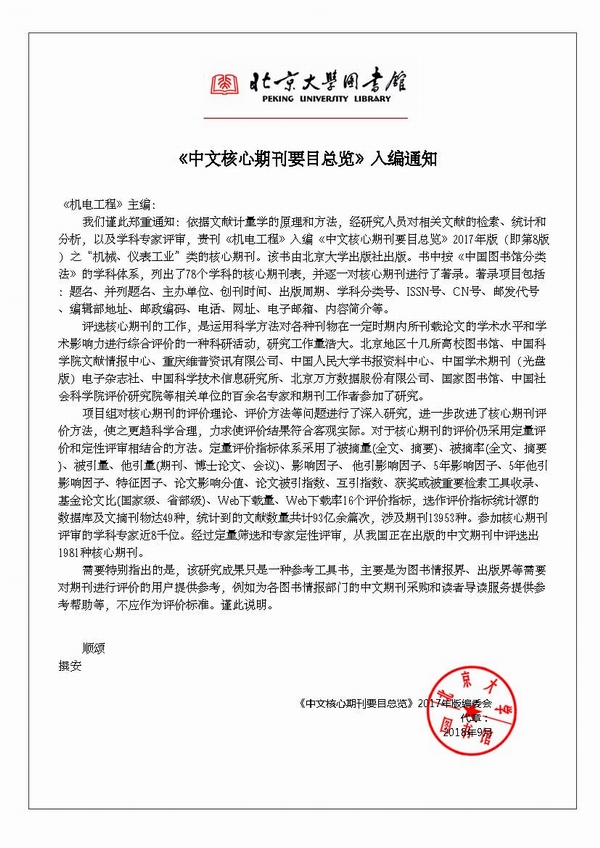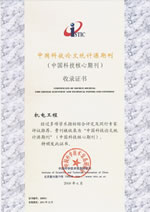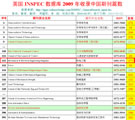
Founded in 1971 >
Chinese Sci-tech Core Periodicals >
British Science Abstracts (SA, INSPEC) Indexed Journals >
United States, Cambridge Scientific Abstract: Technology (CSA: T) Indexed Journals >
United States, Ulrich's Periodicals Directory(UPD)Indexed Journals >
United States, Cambridge Scientific Abstract: Natural Science (CSA: NS) Indexed Journals >
Poland ,Index of Copernicus(IC) Indexed Journals >
International Standard Serial Number:
ISSN 1001-4551
Sponsor:
Zhejiang University;
Zhejiang Machinery and Electrical Group
Edited by:
Editorial of Journal of Mechanical & Electrical Engineering
Chief Editor:
ZHAO Qun
Vice Chief Editor:
TANG ren-zhong,
LUO Xiang-yang
Tel:
86-571-87041360,87239525
Fax:
86-571-87239571
Add:
No.9 Gaoguannong,Daxue Road,Hangzhou,China
P.C:
310009
E-mail:
meem_contribute@163.com
Abstract: In order to solve problems of the degradation and over fitting phenomenon of rotating machinery vibration signals in the process of multi-layer deep learning, the low accuracy of fault diagnosis caused by data sample with noise, and the model inclination in training caused by imbalance data samples, an improved deep residual shrinkage network (DRSN) based fault diagnosis method for rotating machinery was presented. Firstly, the multifault long time series data samples were processed by matrix, and the multi-dimensional gray scale fault samples which were easily accepted by the model were obtained. For the mechanical aging process of rotating machinery from normal state to fault state, multi-point random sampling method was used to construct the whole life cycle data sample for fault diagnosis. Then, the residual term, attention mechanism and focus loss function were introduced to construct a multi-layer deep residual contraction network to diagnose the vibration signals of rotating machinery on the basis of convolutional neural network (the residual term reduced the feature loss of sample data in the training process and avoided the model degradation and over fitting, the attention mechanism and soft thresholding automatically set the noise threshold to reduce the impact of noise on fault diagnosis accuracy, the focus loss function modified the orientation of model training and improved the efficiency and sensitivity of model training). Finally, the model was verified by using the sample of rolling bearing database. The results show that the multi-layer DRSN model has no obvious degradation phenomenon in the training process, and can maintain good training efficiency and fault diagnosis accuracy, avoid noise interference effectively, and correct the bias of model training on unbalanced data sets. Comparing with other models, the average fault diagnosis accuracy of the multilayer DRSN model is improved by about 1%~ 6%.
Key words: rolling bearing; convolutional neural networks(CNN); deep residual shrinkage network(DRSN); soft threshold; imbalance data samples; noise interference








